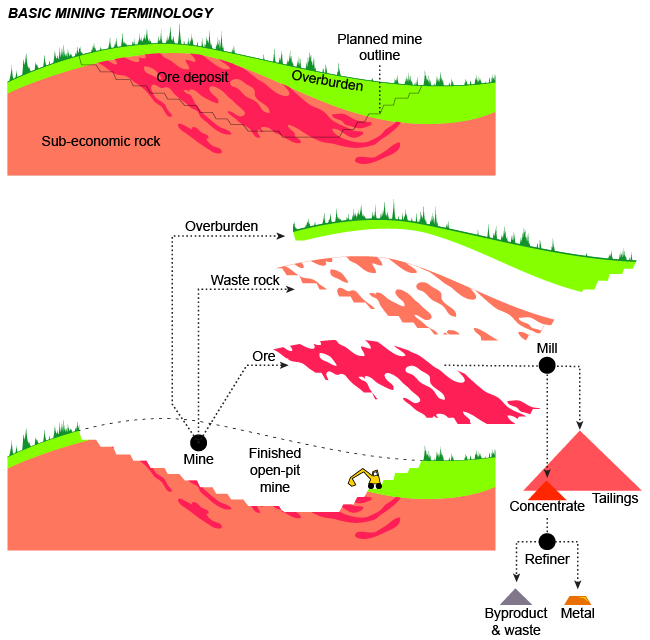Basic Mining Terminology

When metal is mined, the rock is separated into three categories. The first to be excavated is overburden, which includes plants, topsoil, and rocks that are inert and unrelated to the mined deposit. The target rock is then divided into ore and waste rock. Both may have similar mineralogy, but only the ore has enough valuable metal in it to be worth processing. The ore is then milled, usually on-site, to separate the metallic minerals (e.g. metal sulfides) from lower value minerals like silicates and iron sulfide (pyrite.) The resulting concentrate is ready for refining, and has high enough value per mass that it's worth shipping long distances to a refinery. What remains after processing is called "tailings".
Tailings are disposed of in special impoundments meant to prevent pollution from escaping, and often waste rock must be dumped here as well to prevent it from releasing acid and metals into the water. Overburden is usually safe to be used as fill.
The metal concentrate is shipped away to a refiner that separates the metal out from other unwanted chemical constituents.